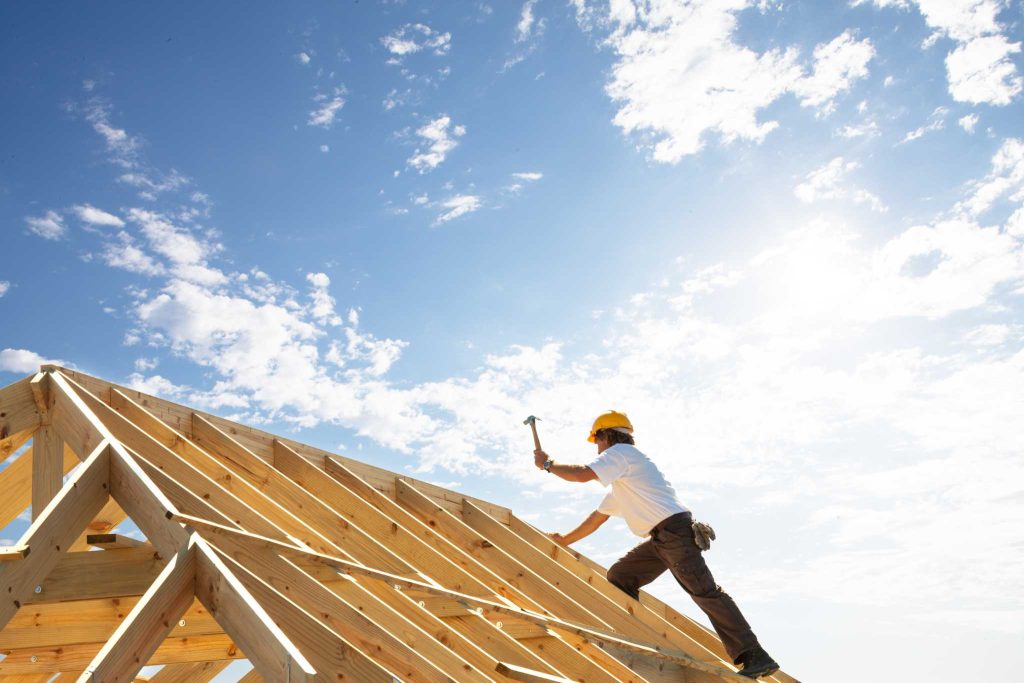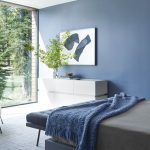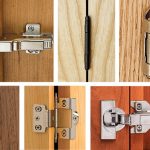Are you wondering which is the best material when it comes to making a durable roof or subfloor? Many people are confused between OSB and plywood as they have similar appearances. OSB and plywood are two of the most common structural materials used in building homes.
Starting from builders to common men, people are often undecided about knowing which material to use when it comes to completing their housing projects. Plywood came into use over a hundred years ago while Oriented Strand Boards entered the market during the early ‘60s; however, it only surpassed the popularity of plywood after 2000.
Even though OSB captures 70% market share today, there are different opinions of construction engineers about preferring OSB over plywood or vice-versa.
So, here is an article that will guide you better when it comes to deciding the correct roofing and flooring material for completing the construction of your house.
Osb vs. Plywood: An In-Depth Analysis
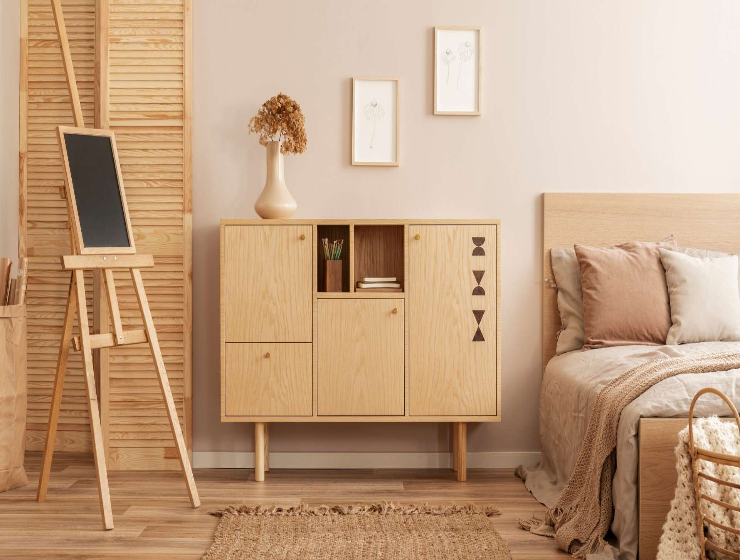
In this segment of the blog, we will elaborately explain the key characteristics and features of both construction materials to help you figure out which structural material you should choose.
1. Origination of Both Materials
Plywood: Plywood originated during the early 19th century and has since been popular as a construction and furniture material.
OSB: Meanwhile, Oriented Strand Boards were first introduced in Canada in the early 1960s; however, it wasn’t until the mid-1980s that this engineered wood-base panel found use in the structural construction of residential properties.
However, the use of OSB in the future is anticipated to increase because of climate concerns associated with large log supplies required in plywood production. The carbon emissions associated with the timber processing industry are uncountable; hence OSB offers to become a safer alternative for building structures.
2. Manufacturing and Composition of OSB and Plywood
OSB: OSB is obtained from small trees that grow quickly. Aspen and poplar tree species are used frequently. Short sections of the log wood are washed and then debarked to produce strands with flakes. These strands are usually dried in triple-pass dryers to reduce their moisture content. Face and core strands are blended in a drum-type rotating blender. The rectangular-shaped wood strands are further bonded together with wax and resin adhesives. Phenol formaldehyde (PF) and diphenylmethane diisocyanate (MDI) are commonly used binders. Pressure (650 to 800 psi) and temperature (400 to 425℉) for 4 to 6 minutes are applied to set the resin and impart the desired stiffness to the panels. Further, the mat is trimmed to achieve the desired length of panels at a trimming press.
Plywood: Plywood consists of several layers of thin wood that are sandwiched together with adhesives. Here the layers of wood are compressed in an alternative grain pattern. Each sheet consists of 3 to 11 layers of thick individual layers. Further, some types of plywood may have a hardwood surface layer which is called a veneer.
3. Types of OSB and Plywood
Both OSB and plywood are available in different types and forms.
OSB
There are several types of Oriental Strand Boards; however, below are the most common types of OSB.
| Types | Description |
| Standard OSB | They come in versatile sizes and have special features. They are suitable for making roofs, walls, and floors. |
| ZIP OSB | ZIP OSB is waterproof and is great for sheathing walls and roofs. |
| Subflooring OSB | This type of OSB is specifically designed for subflooring work. It is smooth and sturdy, and there are many grooves on the surface to facilitate attachments and connections. |
Plywood
Plywood comes in different quality grades.
| Grades | Description |
| Grade A | This is known as cabinet grade and has the most superior quality. The layers are sanded to give a smooth finish without having any knots and voids in between. |
| Grade B | This is next in quality. Even if the sheet is sanded smooth, it may have up to one inch of defects. |
| Grade C | This type of plywood is unsanded and has more defects. |
| Grade D | This is the roughest in quality and comes with larger defects. This kind of plywood is suitable for making subfloors or as a layer under asphalt roof shingles. |
4. Strength and Durability of OSB and Plywood
OSB: When it comes to deciding the strength of OSB vs. plywood, builders treat both materials to be equally strong and durable. The Engineered Wood Association-APA regards both materials to be of the same strength and has published the same performance guidelines for both OSB and plywood. Not only this, but timber scientists also consider that plywood and OSB are equivalent in performance and suggest similar storage recommendations.
OSB floors are slightly squeakier than plywood floors. When OSB is used to make floors, the floors are soft and spongy. However, OSB is stronger than plywood in shear values. Hence they are preferred over plywood in making a network of I-joists. Also, delamination is not a problem with OSB. OSB is more flexible than plywood, so using thicker sheets can be a solution to the problem.
Plywood: Plywood floors are 10% stiffer than OSB floors resulting in harder floors that are sturdy and do not squeak under pressure. Plywood’s shear values are two times lesser than OSB’s.
5. Permeability of OSB and Plywood
OSB: OSB takes more time to absorb water, whether due to relative humidity or direct exposure to liquid water. But the converse is also true. It takes more time for water to come out of OSB panels. Hence rotting is a problem that can be overcome with the application of insulating materials, ply sheathing, and increasing panel thickness.
Plywood: On the other hand, plywood allows moisture to just pass through it without retaining it for a longer time inside it. So, it dries up quickly and will consequently be more durable.
6. Which Material is More Cost-Effective?
OSB: OSB is less expensive compared to plywood. It is $3 to $5 cheaper than plywood per panel. If you have a home of about $2400 sq. ft, then using OSB to cover the subfloor, roof, and wall sheathing will cut down your expenses by $700.
Plywood: Plywood is expensive compared to OSB.
Applications of OSB and Plywood
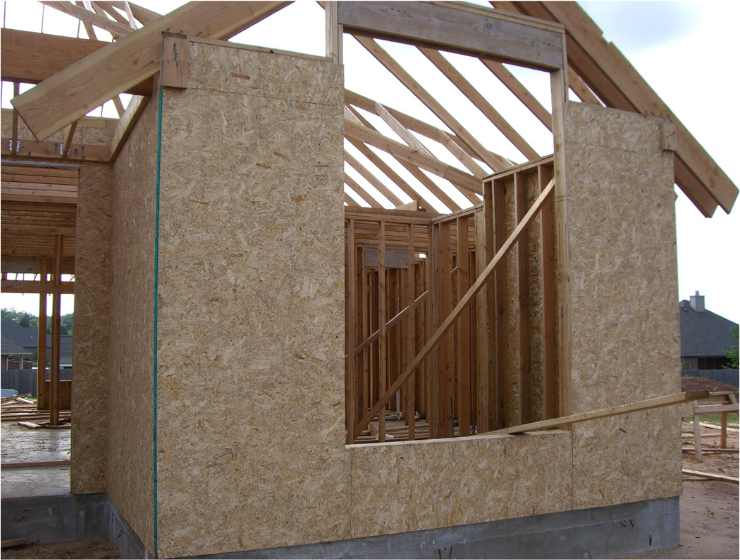
Now that you have understood the differences between OSB and plywood let’s learn about which are the best areas of application for both materials. OSB and plywood are fairly easy to use.
OSB: OSB is an exclusive choice for the construction of buildings. OSB panels are preferred by some builders due to their pre-printed gridlines for facilitating faster cutting, measurements, and installations. Since OSB panels are less resistant to water, some manufacturers use advanced technology to produce OSB panels of higher quality. These panels are more durable but expensive.
OSB is not recommended for subfloors by construction experts as it is not defensive against moisture. Even when it dries off, some deformations can remain in them that can cause problems later.
When it comes to roof and sheathing walls, OSB is a smart choice often. This is because they are manufactured as large sheets, and a single sheet becomes useful to sheath a wall or roof. They also find utility in making webs of wood I-joists.
Plywood: Plywood is quite compatible with making furniture and cabinetry. Plywood is also useful for sheathing purposes. Plywood is suitable for all types of building, construction, and interior projects.
Though OSB is a popular choice for building roofs of residential structures, plywood is still considered better than OSB as a roofing material. Florida’s Dade County has banned OSB as a roofing material after Hurricane Andrew damaged all the roofs.
Plywood is also useful as a construction material in chemical plants and cooling towers as it doesn’t corrode. Plywood is an effective material in making gussets for portal frames and a mesh-like structure of fabricated beams. Plywood is also a desired construction material in places prone to cyclones, hurricanes, and earthquakes.
Comparison Between OSB and Plywood
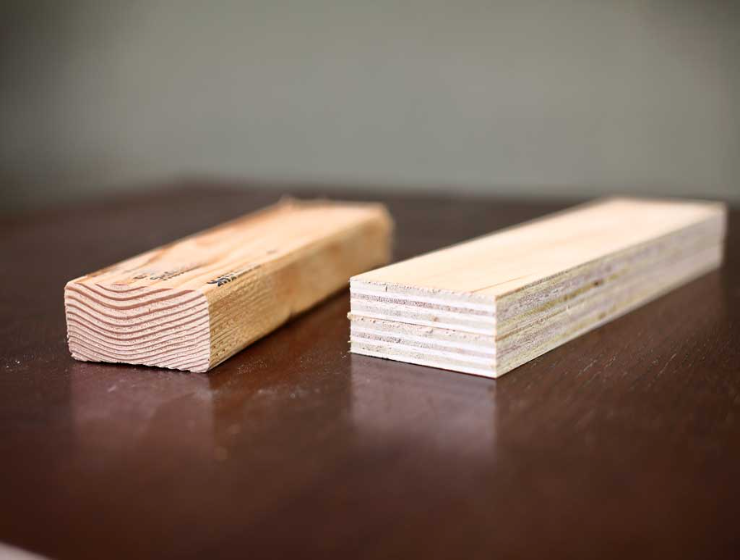
| OSB | Plywood |
| OSB is cheap. | More expensive. |
| Two times higher shear value than plywood. | It offers higher strength and stiffness. |
| They are manufactured as large sheets and pre-marked for easier installation. | It takes time to install. |
| More resistant to decay. | It is better resistant to temperature changes and humidity. |
| Less porous but traps moisture. | Plywood is more porous. |
| Corrodes easily. | Plywood doesn’t corrode. |
OSB vs. Plywood: Which is Better?
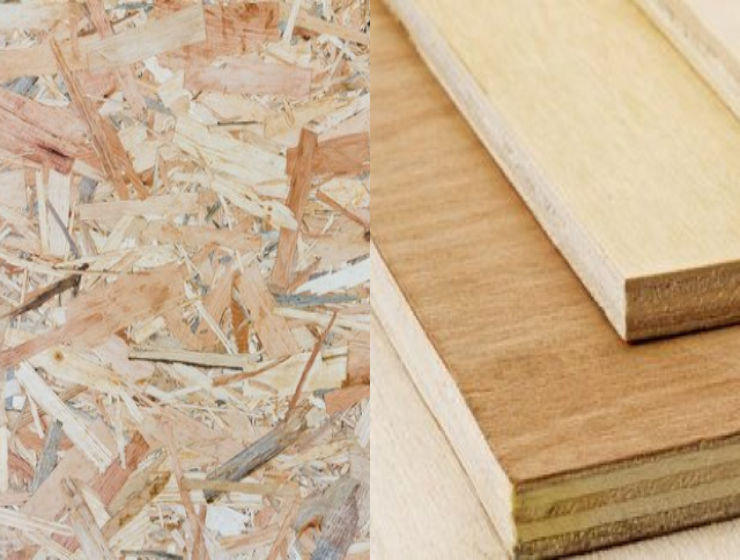
So, did you get clarity after reading this blog as to which material is better for constructing your housing structure?
Both Oriented Strand Boards and Plywood have their pros and cons. If you are looking for cheaper material, then it would be best to go with OSB panels. They come in a variety of shapes and are also pre-marked, which helps with quicker installations. But OSB doesn’t hold onto nails well.
On the other hand, plywood is known to be stiff and shows better resistance to water and moisture. Furthermore, regular plywood is preferred as shingles are considered more secure. But plywood is expensive compared to OSB. Plywood also has the problem of delamination, and some people struggle with its rough edges too.
OSB has been found to be excellent for wall sheathing and roof construction purposes, whereas plywood is a better choice for making subfloors, roof structures, cabinetry, and furniture.
Frequently Asked Questions
How Long Will Plywood Last?
Plywood can usually last long, depending on how it is used and how well it is protected from moisture. Usually, its ability to endure environmental variations depends on its manufacturing quality and the amount of moisture it can endure without getting impacted by it.
Is OSB Stronger than MDF?
Yes, Oriented Strand Boards are stronger than Medium Density Boards. However, some differences may arise due to the thickness of the boards and the manufacturing process. MDF boards find use in cabinetry, flooring, and furniture making.
OSB finds utility in wall sheathing, roof covers, making subfloors, and I-joist in residential or commercial buildings.
What Can I Use Instead of OSB?
Plywood is the best alternative for OSB for roofing and flooring solutions. Although plywood is more expensive, it can do a good job of covering the roof and floors. But when it comes to internal uses like furniture, cabinet making, and such things, then MDF can be an alternative.

